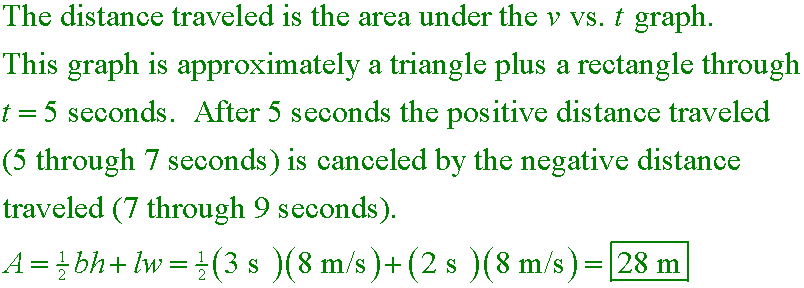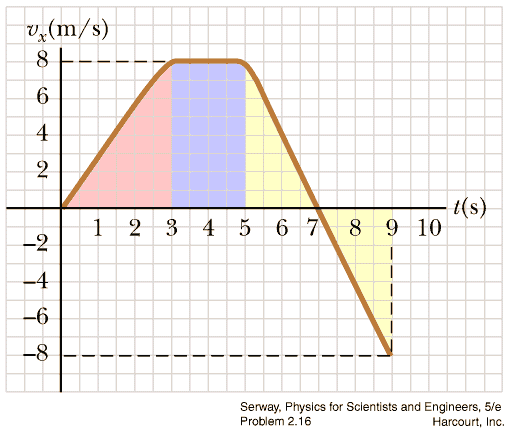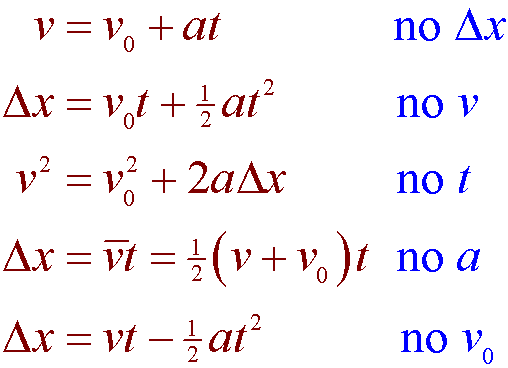Summary
wk4
Reading quiz In which of the following cases is the object speeding up?
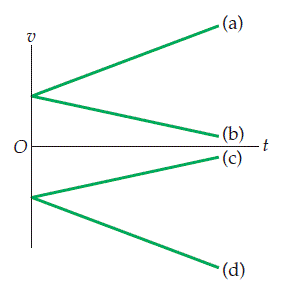
A. (a) and (b)
B. (b) and (c)
C. (a) and (c)
D. (a) and (d)
Answer
klm
You carefully determine that 508 of your hairs span 1.00 inch. How thick is each hair?
A. 5.00 mm
B. 50.0 µm
C. 500 nm
D. 5.00 pm
Answer
sj6 2.20
A truck covers 40 m in 8.5 s while smoothly slowing down to a final speed of 2.80 m/s. What was its initial speed?
A. 2.90 m/s
B. 3.50 m/s
C. 5.25 m/s
D. 6.61 m/s
Answer
sj6 2.27
A jet lands at 100 m/s and can brake at −5.00 m/s2 maximum. What minimum runway length does it require?
A. 800 m
B. 1000 m
C. 2000 m
D. 5000 m
Answer
klm
In order to slow down with constant deceleration a car must take the same amount of time
to slow from 5 m/s to 0 m/s as it did from 10 m/s to 5 m/s.
A. true
B. false
Answer
pop4 2.14
For the v vs. t graph shown below, assume that x = 0 at
t = 0. What is the final position x at t = 9.00 s?
A. −72.0 m
B. 34.3 m
C. 28.0 m
D. −16.8 m
Answer
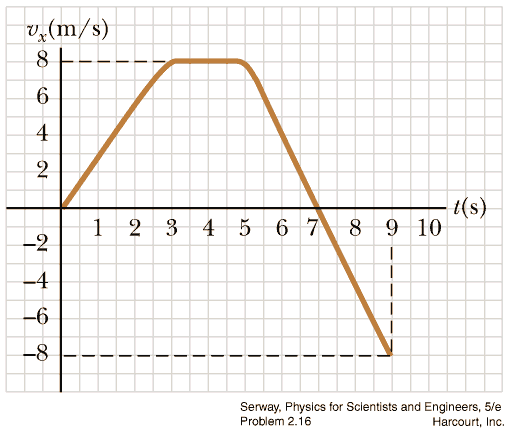
D. (a) and (d)
B. 50 µm
The width is 1.00 inch = 25.4 mm = 25,400 µm / 508 hairs = 50 µm.
D. 6.61 m/s

B. 1000 m
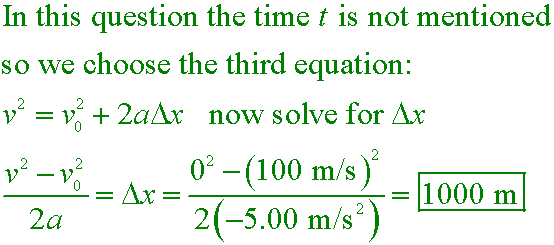
A. true
The distance traveled over the first interval (10 m/s to 5 m/s) is three
times the distance traveled over the second interval (5 m/s to 0 m/s), but the times elapsed are the same.
For instance, if the acceleration were −1.0 m/s², the time intervals would each be 5.0 seconds
but the car would travel 37.5 m as it slowed from 10 m/s to 5 m/s and only 12.5 m as it slowed from
5 m/s to 0 m/s.
C. 28.0 m
